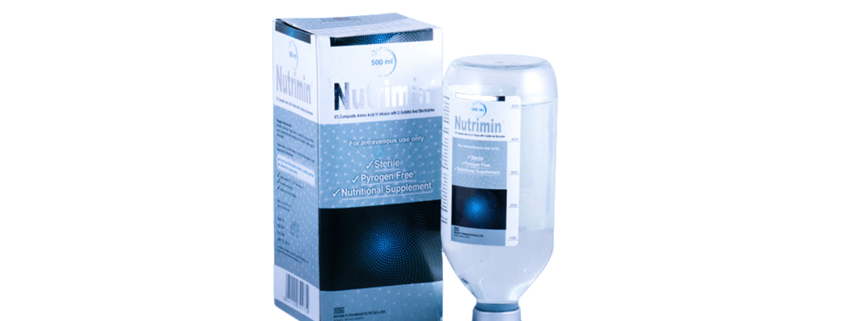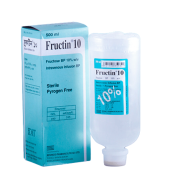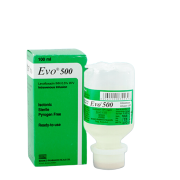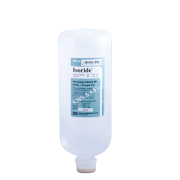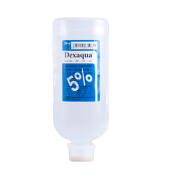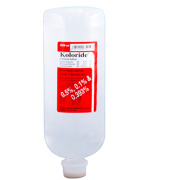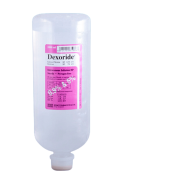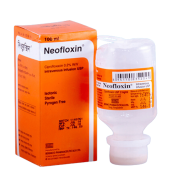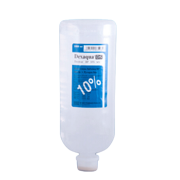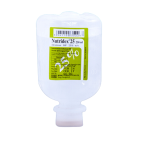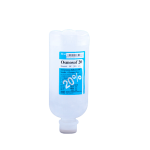Nutrimin
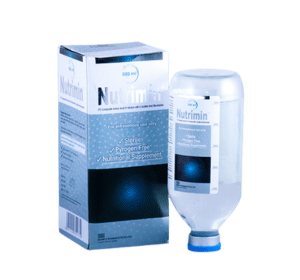
Generic Name: 5% Composite Amino Acid IV Infusion with D-Sorbitoland Electrolytes
Dosage Form: IV Injection
TG Name: Intravenous Fluids
1. What Nutrimin is and what it is used for?
This is a sterile aqueous solution of crystalline Amino Acids and D-Sorbitol with electrolytes, which are necessary as the nitrogen, sources for parenteral nutrition. Amino Acid is indicated as a source of amino acids for protein synthesis in patients needing intravenous nutrition. This is particularly suitable for patients with basal amino acid requirements. Amino acid is also indicated in faster recovery in surgery, burns, renal insufficiency, hepatic insufficiency and effective management of cancer.
2. Before you take Nutrimin
Do not take this medicine and tell your doctor if:
Contraindicated in patients with inborn errors of amino acids metabolism, irreversible liver damage and severe uremia when dialysis facilities are not available.
Take special care with Nutrimin
Check with your doctor before taking this medicine if:
Hyperphenylaninemia has been noted in severely ill, premature infants. In these patients, monitoring of the phenylalanine levels is recommended and the infusion rate is adjusted as needed. Do not use if the solution is turbid or contains particles. Discard any unused portion.
Taking other medicines
At the recommended dosage the amino acid have no pharmacological effects and is not expected to interact with other medicaments.
Pregnancy and breast-feeding
Successful and safe administration of amino acid solutions during pregnancy in the human has been reported. Animal reproduction studies have not been carried out with Amino acid.
3. How to take Nutrimin?
Taking this medicine. Always use Nutrimin exactly as your doctor has told you. You should check with your doctor or pharmacist if you are not sure.
How much to take?
Adults:
The nitrogen requirement for maintenance of body protein mass depends on the patient’s condition (nutritional state and degree of metabolic stress). The requirements are 0.10- 0.15g nitrogen/kg/day (no or minor metabolic stress and normal nutritional state), 0.15-0.20g nitrogen/kg/day (moderate metabolic stress with or without malnutrition) and up to 0.20-0.25g nitrogen/kg/day (severe catabolism as in burns, sepsis and trauma). The dosage range 0.10- 0.25g nitrogen/kg/day corresponds to 15-35 ml Nutrimin®/kg/day. In obese patients, the dose should be based on the estimated ideal weight. Depending upon patients requirements, 1000- 2000 ml .It may be infused intravenously per 24 hours. It should be infused slowly, at rates 1.4-2.8 ml (30-60 drops) per minute.
Infants and Children:
In children and infants, the rate of infusion is 28- 35 ml/kg body weight per day is recommended, with a step wise increase in the rate of administration during the first week.
4. Possible side effects
Nausea Occurs rarely. Vomiting, flushing and sweating have been observed during infusion of Amino acid at rates exceeding the recommended maximal rare. Transient increases liver test during intravenous nutrition have been reported. The reasons are at present unclear. The underlying disease and the components and their amount in the intravenous feeding regimens have been suggested. Hypersensitivity reactions have been reported. As with all hypertonic infusion solution, thrombophlebitis may occur when peripheral veins are used. The Incidence may be reduced by the simultaneous infusion of 10% fat emulsion. If given to severely ill, premature infants, hyperphenylalaninemia may occur.
Tell your doctor if any of the side effects gets serious or lasts longer than a few days, or if you notice any side effects not listed in this leaflet.
5. How to store Nutrimin?
Protect from light and store between 15° C to 25° C temperature. Avoid freezing. Keep out of the reach of children.

